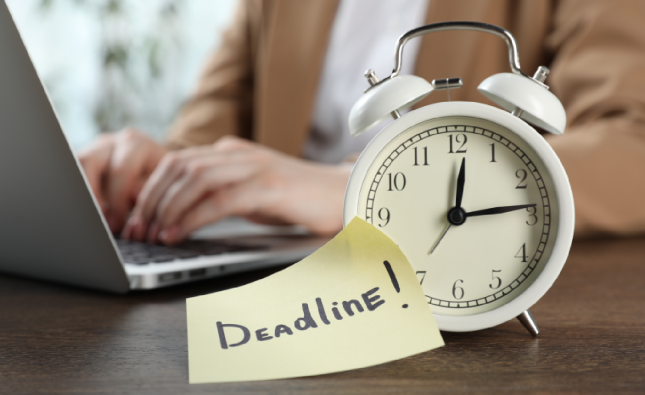You can spend most of your working life blissfully unaware of any HMRC jargon, letting PAYE do its thing. But then decide it’s time to venture into the unknown and become your own boss, and before you know it, tax jargon is coming at you from all angles.
At some point, as inevitably as tax itself, you’ll encounter Self Assessment, and before you know it, payments on account. Intended to make paying your tax bill easier, payments on account can also be an unwanted surprise, which is why we thought we’d share our guide to what they are.
So, what are payments on account?
Payments on account are essentially there to spread the cost of paying tax through Self Assessment. They work on the assumption that you’ll make the same amount or similar in the next tax year as you did in this one.
This can be both a blessing and a curse, but you’ll need to be aware of them if you either:
- Owe more than £1,000 in tax from self-employment to HMRC
- If less than 80% of your tax bill has already been collected at source (so this will be referring to the likes of PAYE)
Think of payments on account as a pre-payment towards next year’s tax bill. But because HMRC aren’t psychic and don’t know what next year’s tax bill will be, they just assume it will be the same as this year’s.
Is there any way around payments on account?
There’s no escaping from this one. The minute you submit your Self Assessment, HMRC will calculate your tax bill. If the bill comes to more than £1,000, or if less than 80% of the tax you paid this year was deducted at source, you’ll automatically become liable for payments on account.
What will my first year with payments on account look like?
It’s well worth preparing yourself for the possibility of making payments on account, so you aren’t hit with unexpected bills.
They can feel like a burden because you’re paying some of next year’s taxes in advance, even though you haven’t earned the money yet.
It’s why it’s so important to keep track of your bookkeeping and potential tax bill throughout the year!
In this example of making payments on account, your tax bill is £1,000 in your first year, and £1,500 in tax in your second year
-
- Your first tax year ended 5th April 2025 (the 2024/25 tax year), and you must pay your £1,000 tax bill before 31st January 2026.

-
- Because your 2024/25 tax bill hit the £1,000 threshold, you must also make payments on account towards the 2025/26 tax year.

-
- The 2025/26 tax year runs 6th April 2025 – 5th April 2026, but the deadline for submitting your 2024/25 tax return is 31st January 2026. This means you won’t actually know what you owe for 2025/26 just yet, so HMRC assume the bill will be the same as it was for 2024/25.

-
- Payments on account are made in two equal instalments. The first half is due at the same time as your 2024/25 tax bill (before 31st January 2026).

-
- That means you’ll need to pay £1,500 by 31st January 2026. This amount is made up of your £1,000 tax bill, and £500 which is your first payment on account for next year’s tax. It can really hammer your cash flow if you’re not expecting it!

-
- Then before 31st July 2026 you would need to pay the remaining £500, which will be your second payment on account towards next year’s bill.

-
- Once you get to the end of your second year, 5th April 2026, HMRC will know you owe £1,500 in tax, but due to splitting the cost with your payments on account, they’ll be able to see that £1,000 has already been paid, leaving £500 left to pay for that tax year.

-
- The bill for the tax year which ends 5th April 2026 is due before 31st January 2027. You’ll need to pay the £500 balance, plus the first payment on account for the following year. HMRC will assume that your bill for the following year is £1,500, so you’ll need to pay half of that amount on top of the £500.

- There would then be the remaining £750 to pay by July 2027.
But what if my profits change from one year to the next?
HMRC calculate your payments on account by assuming you’ll owe an identical amount to the previous tax year. But if you make less profit, you’ll owe less tax, so big changes to your profits can really disrupt things.
HMRC predictions can end up skewing our tax bills, but they do eventually balance themselves out. If your payments on account mean that you overpay on tax one year, you’ll always receive it back when the tax year is over.
Obviously not all of us can wait until the end of the tax year, so there is an option to request for HMRC to reduce your payments on account.
Before you do that though, we strongly recommend some careful analysis of your income, outgoings, and profits first. If you estimate you’ll make much less, but then make a lot more, HMRC will demand the difference straight away and might even charge interest on top.
If you want to reduce payments on account you can submit a request to HMRC.
What should I do if I’m struggling to make payments on account?
We’d recommend either chatting with Citizens Advice, to HMRC themselves, or better yet, speaking to your accountant who can look at your options.
They’ll be able to help you estimate how much your business can afford to pay, so when you go to HMRC, you’ll be ready with a realistic payment plan .
Looking for more advice on all things finance and accounting? Head over to our Freelancer Accounting section where we’ve got a whole hub of handy guides ready to help you out.







